April 12, 2009
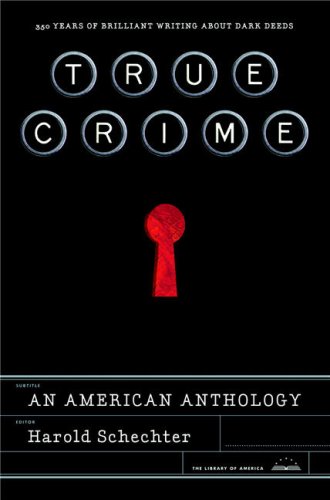
Crime Magazine's Review of True-Crime Books
Caught up in the immediacy of modern-day crime, which we can follow in all its horror millisecond-by-millisecond via the Internet, we shudder in real time over the spring 2009 mass shootings around America and over the trial of Josef Fritzl, the Austrian rapist who imprisoned his own daughter for 24 years and fathered her seven children. (Read more about this harrowing case in John Glatt's Secrets in the Cellar, covered in this column.) Current crimes have a way of eclipsing older crimes, which fade into history and feel, in retrospect, almost quaint. Well, they shouldn't — because life and death meant then what it still means now, and writers of other eras were just as skilled at invoking shock and horror as their modern counterparts. Another of the books in this column, True Crime: An American Anthology, proves this conclusively with gripping accounts of now virtually forgotten murders by some of the finest writers this country has ever produced, from Mark Twain to James Thurber and beyond.
by Anneli Rufus
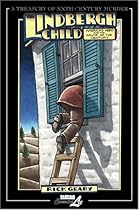 The Lindbergh Child: America's Hero and the Crime of the Century, by Rick Geary (NBM/Comics Lit, 2008): True crime gets the graphic-novel treatment in this thoroughly enjoyable — if appropriately shivery — walk down memory lane. A National Lampoon contributor for many years, comic artist Geary has also drawn for the New York Times Book Review, MAD, Rolling Stone, and Disney Adventures. Here he illustrates the 1932 kidnapping and murder of Charles Lindbergh Jr., infant son of the iconic pilot. Most true-crime aficionados are already familiar with what was indeed the celebrity crime of the century — at least, until O.J. Simpson outpaced it. But this sad tale of a bygone America outraged at the devastation of its hero lends itself remarkably well to Geary's elegant yet expressive style.
The Lindbergh Child: America's Hero and the Crime of the Century, by Rick Geary (NBM/Comics Lit, 2008): True crime gets the graphic-novel treatment in this thoroughly enjoyable — if appropriately shivery — walk down memory lane. A National Lampoon contributor for many years, comic artist Geary has also drawn for the New York Times Book Review, MAD, Rolling Stone, and Disney Adventures. Here he illustrates the 1932 kidnapping and murder of Charles Lindbergh Jr., infant son of the iconic pilot. Most true-crime aficionados are already familiar with what was indeed the celebrity crime of the century — at least, until O.J. Simpson outpaced it. But this sad tale of a bygone America outraged at the devastation of its hero lends itself remarkably well to Geary's elegant yet expressive style.
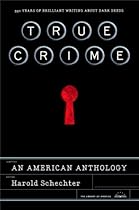 True Crime: An American Anthology, edited by Harold Schechter (The Library of America, 2008): Like The Lindbergh Child, this hefty collection brings once-famous and long-forgotten crimes and criminals back to life. Its three centuries' worth of contemporary accounts by such greats as Nathaniel Hawthorne, Abraham Lincoln, Damon Runyon, Edna Ferber, Zora Neale Hurston, James Elroy, and many others should also spur real respect for skilled crime reportage: as rare now as ever, but astounding at its best. Benjamin Franklin transcends time to spark outrage with his 1734 report about a teenager who was tortured by parents who put "into her own Mouth with an Iron Ladle, her own Excrements to eat." Ambrose Bierce flaunts his eternal black humor in passages such as that of a killer who, in 1872, "chopped away at the lady's head until he had made of it a basket of unsightly chips."
True Crime: An American Anthology, edited by Harold Schechter (The Library of America, 2008): Like The Lindbergh Child, this hefty collection brings once-famous and long-forgotten crimes and criminals back to life. Its three centuries' worth of contemporary accounts by such greats as Nathaniel Hawthorne, Abraham Lincoln, Damon Runyon, Edna Ferber, Zora Neale Hurston, James Elroy, and many others should also spur real respect for skilled crime reportage: as rare now as ever, but astounding at its best. Benjamin Franklin transcends time to spark outrage with his 1734 report about a teenager who was tortured by parents who put "into her own Mouth with an Iron Ladle, her own Excrements to eat." Ambrose Bierce flaunts his eternal black humor in passages such as that of a killer who, in 1872, "chopped away at the lady's head until he had made of it a basket of unsightly chips."
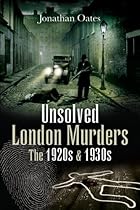 Unsolved London Murders of the 1920s & 1930s, by Jonathan Oates (Wharncliffe, 2009): The inter-war years in Britain are typically depicted in literature and film as mellow and merry, thanks largely to the works of Nöel Coward and P.G. Wodehouse. Oates proves otherwise with accounts of nearly two dozen unsolved homicides, from the stabbing of a French acrobat near Piccadilly Circus to the poisoning of a wealthy Lithuanian egg importer. As is the hallmark of titles from Wharncliffe Books, the true-crime imprint of Yorkshire-based publisher Pen & Sword, these accounts are meticulously detailed; in a chapter about a slain landlady, we learn that the doomed "Mrs. Buxton often wore jewellery in the bar, and on that evening wore a diamond crescent brooch on her breast and a diamond star above. She also wore a gold curved bracelet, a wedding ring, a keeper ring and a single stone diamond ring."
Unsolved London Murders of the 1920s & 1930s, by Jonathan Oates (Wharncliffe, 2009): The inter-war years in Britain are typically depicted in literature and film as mellow and merry, thanks largely to the works of Nöel Coward and P.G. Wodehouse. Oates proves otherwise with accounts of nearly two dozen unsolved homicides, from the stabbing of a French acrobat near Piccadilly Circus to the poisoning of a wealthy Lithuanian egg importer. As is the hallmark of titles from Wharncliffe Books, the true-crime imprint of Yorkshire-based publisher Pen & Sword, these accounts are meticulously detailed; in a chapter about a slain landlady, we learn that the doomed "Mrs. Buxton often wore jewellery in the bar, and on that evening wore a diamond crescent brooch on her breast and a diamond star above. She also wore a gold curved bracelet, a wedding ring, a keeper ring and a single stone diamond ring."
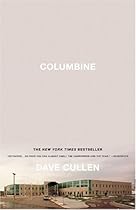 Columbine, by Dave Cullen (Twelve, 2009): Eric Harris was a sociopathic mastermind. His yes-man Dylan Klebold "believed in morality, ethics, and an afterlife," but was keenly oversensitive and wanted to die, award-winning journalist Cullen reveals in this breathtakingly intimate study of the teenage pals who executed the school shooting after which all subsequent ones have been modeled. Cullen wields great impact by cutting back and forth between befores and afters, creating a blood-soaked literary collage whose bits include graphic brains-blown-out death scenes, a pre-crime prom night, Klebold's fear-riddled journal, and inside views of many lives. "Eric was always a dreamer, but he liked them ugly," Cullen tells us. "Eric dreamed of a world where nothing ever happened. A world where the rest of us had been removed."
Columbine, by Dave Cullen (Twelve, 2009): Eric Harris was a sociopathic mastermind. His yes-man Dylan Klebold "believed in morality, ethics, and an afterlife," but was keenly oversensitive and wanted to die, award-winning journalist Cullen reveals in this breathtakingly intimate study of the teenage pals who executed the school shooting after which all subsequent ones have been modeled. Cullen wields great impact by cutting back and forth between befores and afters, creating a blood-soaked literary collage whose bits include graphic brains-blown-out death scenes, a pre-crime prom night, Klebold's fear-riddled journal, and inside views of many lives. "Eric was always a dreamer, but he liked them ugly," Cullen tells us. "Eric dreamed of a world where nothing ever happened. A world where the rest of us had been removed."
Beauty Sleep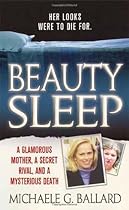 , by Michaele G. Ballard (St. Martin's, 2009): A resident of Charlotte, North Carolina herself, Ballard does an admirable job of evoking that lovely city where, "in the springtime, big oaks form a canopy over the older neighborhoods, cherry blossoms and dogwoods line the streets and pink and white azaleas bloom along the walkways." North Carolina in the early '70s, a society not yet very far removed from TV's beloved "Mayberry," which it had inspired, is the evocative backdrop of a high-school heartbreak that simmered for decades before erupting into the 2001 murder of a former cheerleader in a plastic-surgery clinic's recovery room.
, by Michaele G. Ballard (St. Martin's, 2009): A resident of Charlotte, North Carolina herself, Ballard does an admirable job of evoking that lovely city where, "in the springtime, big oaks form a canopy over the older neighborhoods, cherry blossoms and dogwoods line the streets and pink and white azaleas bloom along the walkways." North Carolina in the early '70s, a society not yet very far removed from TV's beloved "Mayberry," which it had inspired, is the evocative backdrop of a high-school heartbreak that simmered for decades before erupting into the 2001 murder of a former cheerleader in a plastic-surgery clinic's recovery room.
 Vanished Smile: The Mysterious Theft of Mona Lisa, by R.A. Scotti (Knopf, 2009): On August 21, 1911, Leonardo da Vinci's famous portrait of a slyly smiling woman went missing from the Louvre. It was yet another "crime of the century." Scotti merges the skills and predilections of an art lover, an historian, and a novelist, all of which she is — but this is a work of pure nonfiction. When the painting vanished, slow-to-scare "Parisians ... expected a swift recovery: the hoax exposed, a ransom quietly paid, the lady returned unharmed." Truth unfurled differently; the work was AWOL for two years, during which time Pablo Picasso was among many celebrated prime suspects. "Mona Lisa's disappearance was a global media event," Scotti writes. "L'Affaire de la Joconde combined beauty and loss, mystery and money, with hints of lust." Oui.
Vanished Smile: The Mysterious Theft of Mona Lisa, by R.A. Scotti (Knopf, 2009): On August 21, 1911, Leonardo da Vinci's famous portrait of a slyly smiling woman went missing from the Louvre. It was yet another "crime of the century." Scotti merges the skills and predilections of an art lover, an historian, and a novelist, all of which she is — but this is a work of pure nonfiction. When the painting vanished, slow-to-scare "Parisians ... expected a swift recovery: the hoax exposed, a ransom quietly paid, the lady returned unharmed." Truth unfurled differently; the work was AWOL for two years, during which time Pablo Picasso was among many celebrated prime suspects. "Mona Lisa's disappearance was a global media event," Scotti writes. "L'Affaire de la Joconde combined beauty and loss, mystery and money, with hints of lust." Oui.
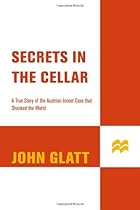 Secrets in the Cellar, by John Glatt (St. Martin's, 2009): Today his name is splashed all over the international headlines, and Josef Fritzl — who imprisoned his own daughter for 27 years in the basement of the family home in suburban Austria— has come to represent the ultimate parent from hell. Intrigued by those newspaper reports but want to learn more? True-crime veteran Glatt details this modern monster, beginning with Fritzl's boyhood days of being beaten bloody by the Nazi-worshipping mother he idolized. We watch him building the dungeon in which "like an animal he raped her again and again," and where she waited, bearing one child after another, until her eventual escape.
Secrets in the Cellar, by John Glatt (St. Martin's, 2009): Today his name is splashed all over the international headlines, and Josef Fritzl — who imprisoned his own daughter for 27 years in the basement of the family home in suburban Austria— has come to represent the ultimate parent from hell. Intrigued by those newspaper reports but want to learn more? True-crime veteran Glatt details this modern monster, beginning with Fritzl's boyhood days of being beaten bloody by the Nazi-worshipping mother he idolized. We watch him building the dungeon in which "like an animal he raped her again and again," and where she waited, bearing one child after another, until her eventual escape.
(Vol. 28, 12/23/08)
In some parts of the world, Great Britain among them, telling ghost stories is a dead-of-winter tradition. Nights are longer at midwinter, and ghost-story-telling is decidedly best done after dark. The sounds of wind, rain, and snow-burdened branches create ambient creepy effects. For us fans, true-crime stories are all ghost stories, in a way. Even if — such as a few reviewed in this column — they don't include any homicides, they nonetheless conjure up their share of spooky chills, because even if no one perished in the course of any given crime, there is always a victim, often many victims. What have they lost, if not their lives? Property, identity, a sense of security. See? That should send shivers up and down any sentient spine. As for those books that are about homicides, what better time of year to lock up tight, light a fire, learn about the horrors that humans perpetrate upon each other ... and feel all the more grateful for what we've got and with whom we're lucky enough to still savor it?
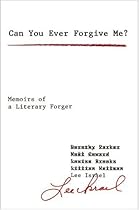 Can You Ever Forgive Me? Memoirs of a Literary Forger, by Lee Israel (Simon & Schuster, 2008). Oooh, it's hard to like this one. Yet it's hard to hate this one as well. Can You Ever Forgive Me? embodies a rare crime-book conundrum in that its author committed crimes and this book basically consists of her boasting about them. Formerly a successful biographer who fell upon hard times in the mid-'90s, Israel bought a bunch of vintage typewriters and used them to create faux letters from such late literary celebrities as Dorothy Parker, Lillian Hellman and Nöel Coward, forging their signatures by tracing them after placing originals atop a TV set which doubled as a light table. "Banjos up!" Israel recounts, gloatingly. "Bending over the TV screen, I hunkered down with a magenta pencil in my hand. I breathed in and out athletically, making the kind of natural-birthing sounds I had hated when other people made them at the gym to which I could no longer afford to belong." She sold hundreds of faux letters to dealers and collectors before the FBI came calling; then she was sentenced to probation and a brief house arrest. Israel's snide snooty swagger will make some readers want to sling this slender volume out the window; others will relish its eloquence and interesting background on the bards Israel impersonated.
Can You Ever Forgive Me? Memoirs of a Literary Forger, by Lee Israel (Simon & Schuster, 2008). Oooh, it's hard to like this one. Yet it's hard to hate this one as well. Can You Ever Forgive Me? embodies a rare crime-book conundrum in that its author committed crimes and this book basically consists of her boasting about them. Formerly a successful biographer who fell upon hard times in the mid-'90s, Israel bought a bunch of vintage typewriters and used them to create faux letters from such late literary celebrities as Dorothy Parker, Lillian Hellman and Nöel Coward, forging their signatures by tracing them after placing originals atop a TV set which doubled as a light table. "Banjos up!" Israel recounts, gloatingly. "Bending over the TV screen, I hunkered down with a magenta pencil in my hand. I breathed in and out athletically, making the kind of natural-birthing sounds I had hated when other people made them at the gym to which I could no longer afford to belong." She sold hundreds of faux letters to dealers and collectors before the FBI came calling; then she was sentenced to probation and a brief house arrest. Israel's snide snooty swagger will make some readers want to sling this slender volume out the window; others will relish its eloquence and interesting background on the bards Israel impersonated.
The Lost Night: A Daughter's Search for the Truth of Her Father's Murder, by Rachel Howard (Plume, 2006): One hot summer night when the author was 10 years old and living with her father, stepmother, and stepbrother in the tidy California agricultural-belt town of Merced, her dad was stabbed to death in the adjoining bedroom. No one saw the stabber — at least, no one who survived. The murder occurred just inches away from the author's stepmother, Sherrie: "a habitual eyelash batter, a fan of heavy metal music, a partyer" who "was incorrigibly flirtatious and suggestive" — and who claimed not to have seen the assailant. Stan Howard's killer was never caught. The lion's share of this book is not about the crime per se, but about the author's life before and afterward: thus, about how the effects of a homicide strike deep and linger long. Howard is generous and unflinching in her memories of a tormented adolescence, some of it spent in the home of a stepfather whom she watched using "a screwdriver to gouge the eyes of a rat he'd caught in one of our mousetraps, laughing in amusement."
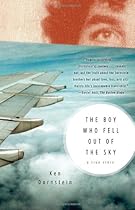 The Boy Who Fell Out of the Sky, by Ken Dornstein (Vintage, 2007): Further meditations on the long-term effects of losing loved ones to violence power this page-turner of a memoir by the younger brother of David Dornstein, whose name is poignantly unfamiliar despite his deep yearnings to gain worldwide fame. Handsome Ivy League grad David, an inexhaustible 25-year-old writer of unfinished novels and copious journals, never lived to achieve his wished-for literary stardom but entered the headlines in another, truly horrific way: He was one of the passengers on Pan Am Flight 103, which was destroyed by terrorist bombs over Lockerbie, Scotland, on Dec. 21, 1988. In this tale of two lives before and one life after the bombing, complete with scenes at the bombers' trial, brother Ken goes all-out confessional, recounting with sometimes painful honesty his brother's mental-health struggles and his own arguably obsessive journey into David's private life. One result of that journey (it's not a secret, so this isn't a spoiler) is that Ken is now married to David's college girlfriend. "All man has ignored you or misconstrued you," David wrote in his journal shortly before his death, "has hurt you has sapped you has treated you unkindly and you are obsessed with changing their minds and you write you write you write."
The Boy Who Fell Out of the Sky, by Ken Dornstein (Vintage, 2007): Further meditations on the long-term effects of losing loved ones to violence power this page-turner of a memoir by the younger brother of David Dornstein, whose name is poignantly unfamiliar despite his deep yearnings to gain worldwide fame. Handsome Ivy League grad David, an inexhaustible 25-year-old writer of unfinished novels and copious journals, never lived to achieve his wished-for literary stardom but entered the headlines in another, truly horrific way: He was one of the passengers on Pan Am Flight 103, which was destroyed by terrorist bombs over Lockerbie, Scotland, on Dec. 21, 1988. In this tale of two lives before and one life after the bombing, complete with scenes at the bombers' trial, brother Ken goes all-out confessional, recounting with sometimes painful honesty his brother's mental-health struggles and his own arguably obsessive journey into David's private life. One result of that journey (it's not a secret, so this isn't a spoiler) is that Ken is now married to David's college girlfriend. "All man has ignored you or misconstrued you," David wrote in his journal shortly before his death, "has hurt you has sapped you has treated you unkindly and you are obsessed with changing their minds and you write you write you write."
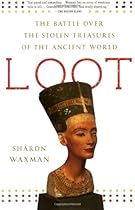 Loot: The Battle Over the Stolen Treasures of the Ancient World, by Sharon Waxman (Times Books, 2008): In museums, we hardly imagine ourselves to be accessories to crime. Yet Waxman, a former New York Times cultural correspondent, details with grueling honesty the routes by which countless glorious artworks have been (and continue to be) snatched illegally from their countries of origin to bolster the world's most celebrated collections. Do you love the Louvre? "Forged in the fervor of revolutionary zeal," Waxman writes, "the Louvre was meant to embody the very essence of the humanist ideals that led to the overthrow of the French monarchy." Yet in 1793, "the Louvre opened its doors to art that was gathered, bought, looted, and appropriated from other places, without much thought to the consequences or concerns of those places of origin." With the rise of Napoleon, "the despoiling of Italy was an act of national pride" for the French. Waxman names names, tracking recent scandals at the Getty and other museums. Few institutions escape unscathed: "Filling the halls of the British Museum are many object that were plundered in the most basic sense: Taken without permission."
Loot: The Battle Over the Stolen Treasures of the Ancient World, by Sharon Waxman (Times Books, 2008): In museums, we hardly imagine ourselves to be accessories to crime. Yet Waxman, a former New York Times cultural correspondent, details with grueling honesty the routes by which countless glorious artworks have been (and continue to be) snatched illegally from their countries of origin to bolster the world's most celebrated collections. Do you love the Louvre? "Forged in the fervor of revolutionary zeal," Waxman writes, "the Louvre was meant to embody the very essence of the humanist ideals that led to the overthrow of the French monarchy." Yet in 1793, "the Louvre opened its doors to art that was gathered, bought, looted, and appropriated from other places, without much thought to the consequences or concerns of those places of origin." With the rise of Napoleon, "the despoiling of Italy was an act of national pride" for the French. Waxman names names, tracking recent scandals at the Getty and other museums. Few institutions escape unscathed: "Filling the halls of the British Museum are many object that were plundered in the most basic sense: Taken without permission."
(Vol. 27, 08/09/08)
Identity theft is one of those menaces lurking ever-present, but never real until it happens to you. We speculate around the water-cooler about what a pain in the behind it would be, but heck, it's not serial murder, after all. It's not a violent crime. Well, it happened to a relative of mine this year — not once, but twice. A disabled senior, Ella had not one but two credit cards stolen by someone she was paying to help her with daily tasks — and who used the cards to spend thousands of dollars at trendy hair salons, clothing stores, a casino, and Toys R Us. "How could this happen?" Ella asked me in one of many calls shortly after the fraud was first discovered. "I'm a businesswoman," she said. "I'm supposed to be too smart for this." Rather than feeling gradually better as the weeks passed after the crime was first discovered, Ella felt worse and worse. Law enforcement made only the feeblest attempt to pursue the perpetrator, then apparently gave up. Ella feared that the perpetrator was stalking her, would break into her house, would physically harm her. Six months after the crime, she still lies awake many nights, plagued by such thoughts. Nonviolent crimes torment their victims too. As Joe Roubicek writes in one of the books in this month's column, seniors are tragically fragile — and they're growing ever older, becoming an ever-larger sector of the U.S. population. We read true-crime books for entertainment, for enlightenment — but also for edification, because "one day," Roubicek warns, "we will all be in the same boat."
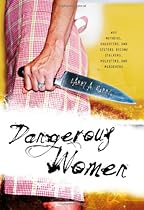 Dangerous Women: Why Mothers, Daughters, and Sisters Become Stalkers, Molesters, and Murderers, by Larry A. Harris (Prometheus Books, 2008): An Arizona mother took explicit snapshots of herself engaging in sex acts with her preteen daughter and son, then sent these to her incarcerated fiancé thinking "it would make him love me more." A girl who grew up parentless in a Kansas City housing project embraced the local gang as a surrogate family, and by age 24 was responsible for some 50 shootings and six murders. Over three dozen fascinating, heartbreaking cases recounted by a longtime clinical and forensic psychologist reveal a rising crime trend that no one can afford to ignore. Within the 1990s, Harris writes, the rate of criminal offenses by American girls under 18 rose by 157 percent, half the rate of offenses by boys.
Dangerous Women: Why Mothers, Daughters, and Sisters Become Stalkers, Molesters, and Murderers, by Larry A. Harris (Prometheus Books, 2008): An Arizona mother took explicit snapshots of herself engaging in sex acts with her preteen daughter and son, then sent these to her incarcerated fiancé thinking "it would make him love me more." A girl who grew up parentless in a Kansas City housing project embraced the local gang as a surrogate family, and by age 24 was responsible for some 50 shootings and six murders. Over three dozen fascinating, heartbreaking cases recounted by a longtime clinical and forensic psychologist reveal a rising crime trend that no one can afford to ignore. Within the 1990s, Harris writes, the rate of criminal offenses by American girls under 18 rose by 157 percent, half the rate of offenses by boys.
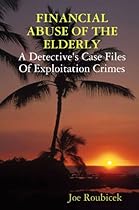 Financial Abuse of the Eldery: A Detective's Case Files of Exploitation Crimes, by Joe Roubicek (Lulu, 2008): We're always being reminded that the average life-expectancy among Americans is rising higher and higher. We speculate about how this will affect the health-care industry and Social Security. What flies mostly under the radar — to the tune of millions of cases every year, according to Roubicek, a former Fort Lauderdale detective who handled over a thousand of them and writes with the righteous clarity of a crusader — is fraud and exploitation perpetrated against the frail elderly. In chapters drawn from the author's own career, we meet seniors with short-term memory loss whose "caregivers" bullied them, extorted them, and persuaded them to sign over their assets and write 10 paychecks a day. To anyone who reads this, seniors will suddenly become much less invisible.
Financial Abuse of the Eldery: A Detective's Case Files of Exploitation Crimes, by Joe Roubicek (Lulu, 2008): We're always being reminded that the average life-expectancy among Americans is rising higher and higher. We speculate about how this will affect the health-care industry and Social Security. What flies mostly under the radar — to the tune of millions of cases every year, according to Roubicek, a former Fort Lauderdale detective who handled over a thousand of them and writes with the righteous clarity of a crusader — is fraud and exploitation perpetrated against the frail elderly. In chapters drawn from the author's own career, we meet seniors with short-term memory loss whose "caregivers" bullied them, extorted them, and persuaded them to sign over their assets and write 10 paychecks a day. To anyone who reads this, seniors will suddenly become much less invisible.
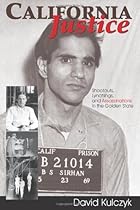 California Justice: Shootings, Lynchings, and Assassinations in the Golden State, by David Kulczyk (Word Dancer Press, 2008): Were you to conduct a worldwide poll asking which of the 50 states bred the most spectacular crimes, California would stand a good chance of winning. But in this omnibus of outlaws that begins during the Gold Rush in 1850, Sacramento journalist Kulczyk examines a tradition that began long before the media-circus cases that cemented this dubious reputation. A key theme in this book is vigilantism. Well into the 20th century, Wild West criminals escaped the scenes of their crimes to dissolve into some distant population. By the rules of "California justice," Kulczyk tells us, "those who didn't leave were hanged, beaten, or shot."
California Justice: Shootings, Lynchings, and Assassinations in the Golden State, by David Kulczyk (Word Dancer Press, 2008): Were you to conduct a worldwide poll asking which of the 50 states bred the most spectacular crimes, California would stand a good chance of winning. But in this omnibus of outlaws that begins during the Gold Rush in 1850, Sacramento journalist Kulczyk examines a tradition that began long before the media-circus cases that cemented this dubious reputation. A key theme in this book is vigilantism. Well into the 20th century, Wild West criminals escaped the scenes of their crimes to dissolve into some distant population. By the rules of "California justice," Kulczyk tells us, "those who didn't leave were hanged, beaten, or shot."
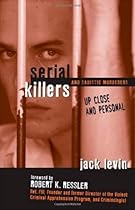 Serial Killers: Up Close and Personal, by Jack Levin (Prometheus Books, 2008): As a criminologist specializing in extreme violence, Levin has interviewed some of the most ruthless figures in recent American history. Part true-crime collection and part memoir, this engagingly intimate volume recounts some of these interviews and details Levin's other connections with high-profile cases. Eerie if-only-someone-had-seen-this-before observations permeate chapters on such figures as "Hillside Strangler" Ken Bianchi and DC Sniper John Allen Muhammed: A family friend told Levin that, as a boy, Jeffrey Dahmer had "the epitome of the wicked stepmother." Levin's work has come at great personal cost, he writes: "I am still sickened when I allow myself to think of the most ghastly crime scenes. ... To this day, it remains difficult to get a good night's sleep."
Serial Killers: Up Close and Personal, by Jack Levin (Prometheus Books, 2008): As a criminologist specializing in extreme violence, Levin has interviewed some of the most ruthless figures in recent American history. Part true-crime collection and part memoir, this engagingly intimate volume recounts some of these interviews and details Levin's other connections with high-profile cases. Eerie if-only-someone-had-seen-this-before observations permeate chapters on such figures as "Hillside Strangler" Ken Bianchi and DC Sniper John Allen Muhammed: A family friend told Levin that, as a boy, Jeffrey Dahmer had "the epitome of the wicked stepmother." Levin's work has come at great personal cost, he writes: "I am still sickened when I allow myself to think of the most ghastly crime scenes. ... To this day, it remains difficult to get a good night's sleep."
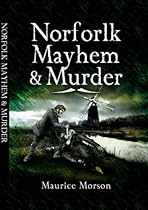 Norfolk Mayhem & Murder: Classic Cases Revisited, by Maurice Morson (Wharncliffe Books, 2008): Black-and-white archival photographs and incredibly detailed narratives of 19th- and very early 20th-century crimes make this compact compendium perfect for the fireside on a long rainy night. A retired high-ranking Norfolk police officer and the author of other true-crime books, Morson conjures earnestly and passionately the sense and sensibility of the eras about which he writes, giving a real feel for manners and customs long-vanished. This book belongs to a series of local true-crimers from the same British publisher. Others in the series include Foul Deeds & Suspicious Deaths Around Portsmouth, Foul Deeds & Suspicious Deaths in Suffolk, Foul Deeds and Suspicious Deaths in Cumbria, Kent Murder & Mayhem, Warwickshire's Murderous Women, and Yorkshire Hangmen. These would be interesting gifts for travelers or for readers who have roots in these areas.
Norfolk Mayhem & Murder: Classic Cases Revisited, by Maurice Morson (Wharncliffe Books, 2008): Black-and-white archival photographs and incredibly detailed narratives of 19th- and very early 20th-century crimes make this compact compendium perfect for the fireside on a long rainy night. A retired high-ranking Norfolk police officer and the author of other true-crime books, Morson conjures earnestly and passionately the sense and sensibility of the eras about which he writes, giving a real feel for manners and customs long-vanished. This book belongs to a series of local true-crimers from the same British publisher. Others in the series include Foul Deeds & Suspicious Deaths Around Portsmouth, Foul Deeds & Suspicious Deaths in Suffolk, Foul Deeds and Suspicious Deaths in Cumbria, Kent Murder & Mayhem, Warwickshire's Murderous Women, and Yorkshire Hangmen. These would be interesting gifts for travelers or for readers who have roots in these areas.
(Vol. 26, 01/06/08)
Another year begins, and with it the crime statistics for each city restart at zero. Sadly, by the time 2008 was only four hours old, two homicides had already occurred in Oakland, Calif., where 2007 had been a dangerous — if not quite record-breaking — year. Whether true-crime books evoke, for you, a strange faraway realm or whether they evoke people and places that are all too close to home, here are a few new ones for a new year.
Vanished at Sea, by Tina Dirmann (St. Martin's, 2008): Thomas and Jackie Hawks "weren't rich," the author reminds us. The longtime probation officer and homemaker just worked hard and saved prudently in order to afford, in their middle years, a 55-foot yacht in which to cruise the world. But the arrival of a grandchild convinced them to sell the boat and become landlubbers again. Dirmann's absorbing account of what happened when the Hawkses put their trust in a would-be buyer, a former TV child-actor who had turned into something far more sinister, will make you grateful just to have your feet on terra firma.
Simon Says, by Kathryn Eastburn (Da Capo, 2008): As in Vanished at Sea, the victims featured in this shocking and ultimately very sad book were also a retired couple, so much in love. A few days after Carl and JoAnna Dutcher and their 15-year-old grandson Tony were brutally slain on a remote Colorado mountainside, an unlikely killer confessed: mild-mannered, 15-year-old Isaac Grimes, Tony's former best friend. He said he'd been buffaloed into the crime by an equally unlikely mastermind: high-school senior Simon Sue, a skinny kid who had recruited Grimes and other boys into a Guyana-based (but imaginary) paramilitary junta.
Dance With the Devil, by David Bagby (Key Porter, 2007): When the corpse of promising young doctor Andrew Bagby was found in a Pennsylvania park, his parents were devastated — but also instantly suspicious of Shirley Turner, a fellow doctor with whom Andrew had recently broken up. This is really two books in one: It's a true-crime narrative detailing Kate and David Bagby's relentless pursuit of justice as Turner fled to Canada and fended off extradition. But it is also an honest, earnest and often painfully intimate blow-by-blow account of grief and loss. As such, reading it might make the loved ones of other murder victims feel at least a little less alone.
The Vienna Woods Killer, by John Leake (Granta, 2007): When prostitutes started turning up strangled by their own stockings around Los Angeles in 1991, investigators could hardly imagine —†yet — that this was part of a killing spree begun halfway around the world, and that the killer might be one of Austria's most popular reporters. Having murdered a girl some 16 years earlier, Jack Unterweger had been released from prison when do-gooder activists declared him a literary genius. As a free man again, Unterweger became a "celebrity journalist" ... while returning secretly to his killing ways, as Leake reveals in a work whose self-conscious stylism —91 chapters, most barely more than a page long — sometimes gets in its own way.
Facing Down Evil, by Clint Van Zandt (Berkley, 2007): After 9/11, Van Zandt muses, "all anybody seemed to want to talk about were security issues. Anyway, it's all anybody seemed to want to talk about to me." That's because he spent 25 years as the FBI's chief hostage negotiator, a career he details here with an almost aw-shucks humility that is all the more endearing as you read about his quick wits and courage in one hair-raising hostage situation after another. Van Zandt disarmed hostage-takers by using psychological engineering, which sometimes means saying things like: "Yeah, buddy, but you've only killed three people so far, and who's to say those three didn't deserve it?"
(Vol. 25, 09/19/07)
When a single crime inspires not one but three books — and that crime doesn't involve celebrities — then you have to wonder what it is about such a case that strikes such a compelling chord. Does it contain universal elements to which nearly everyone can relate? Or is its perverse appeal quite the opposite — that this particular crime is a window into a world we can barely fathom? Psychotherapist Felix Polk's October 2002 murder at the hands of his wife Susan appeals on both levels at once. The Polk family home was on a quiet, leafy street in a quiet, leafy suburb: the American dream, Northern California style, complete with pool. Yet Susan Polk, the mother of Felix Polk's three sons, was also his former patient: a seriously disturbed teenager for whom, 30-some years ago, he left his first wife. The case has spawned three worthy volumes, all published since Susan's 2006 conviction. They join an interesting crop of new releases, including Dr. David Kirschner's breakthrough study on the "Adopted Child Syndrome."
Mind Games, by Carlton Smith (St. Martin's, 2007): In October 2002, a housewife murdered her husband behind the couple's sprawling suburban San Francisco Bay Area home. Neither husband nor wife had been famous, yet this crime has since spawned than three books this year. (Another is reviewed below.) From the prolific and satisfyingly detail-oriented Smith, quick-paced Mind Games is the latest in a growing library of works about psychiatrist Felix Polk: In the '70s, he shattered professional protocol by sleeping with and then marrying one of his disturbed teenage patients. The couple had three boys. Thirty years later, Susan Polk would viciously stab her husband to death.
Seduced by Madness, by Carol Pogash (Morrow, 2007): Local journalist Pogash lavishes much care on the early days of Felix Polk's dalliances in Berkeley with the woman who would later bear him three sons, slay him, and display glaring evidence of mental illness when representing herself in the courtroom. For Pogash, the Polk story is a sad testament to the excesses and experiments that characterized California culture in the '60s and '70s. Insiders shared intriguing theories with the author: For instance, Felix Polk's best friend suggested that Felix loved Susan so much as to let her kill him, as a perverse form of suicide.
Aftermath, Inc., by Gil Reavill (Gotham, 2007): As a true-crime and disaster reporter for Maxim, Reavill amassed quite a vocabulary for describing the shocking and nauseating. To research this book, he tagged along with technicians who work for a Midwestern biohazard-cleanup company that restores and sanitizes homicide scenes. Much can be learned about chemistry and etymology from this account of what happens "after CSI goes home," though it's told in language that's anything but text bookish. That's a plus or minus depending on your taste. Sample lines: "The spinal fluid from the deceased had rectified into a glaze-brown varnish on the floor" ... "a roiling, boiling, yellow-beige 'maggot mass' of insect larvae, mostly meaty blowfly young'uns" ... "my pity for the dead was always underpinned by a craven sense of relish." Clearly.
Murder in Old Kentucky, by Keven McQueen (McClanahan, 2005): A bloated, headless corpse discovered in a cane field. A Depression-era school shooter who vanished into thin air. Two teenagers raped and set afire two days before Christmas in 1881 by killers who later described themselves as having wanted "to have a little fun." An instructor in Eastern Kentucky University's department of English and theater, McQueen injects saucy wit into these accounts of 19th- and early 20th-century Bluegrass brutality. But he also adroitly makes each case relevant to modern times: For instance, in his chapter about redheaded John Vonderheide, who was hanged for killing an African-American girl, McQueen reveals that his research has yielded innumerable newspaper articles about "black mobs lynching blacks, blacks lynching whites, whites lynching whites for committing crimes against blacks, and multiracial mobs lynching white and black suspected killers. Obviously the effects of lynching on race relations were more complex than we might think."
Jack of Jumps, by David Seabrook (Granta, 2007): In a London lovers' lane, a prostitute's half-naked corpse was discovered just after dawn on a June morning in 1959. It had been posed against a tree. Thus began a crime wave that spanned the next six years, during which eight sex workers were killed and countless clues led to ... nothing. Arguably Britain's most notorious unsolved-murder spree since Jack the Ripper, this chilling chapter in London's history gets a brooding, emotional and highly stylized treatment here as Seabrook recreates the victims' last days and hours and depicts a seedy, sad postwar, pre-Beatles Britain beset with fog and smog and dashed hopes. Seabrook interviewed dozens of surviving witnesses, law-enforcement officers and acquaintances of the dead, but his densely self-conscious phrasing sometimes stalls the narrative.
Adoption: Uncharted Waters, by Dr. David Kirschner (Juneau Press, 2006): Clinical psychologist Kirschner noticed early on in his practice that "an inordinately high percentage of the children and teenagers referred to him were adopted" and had developed rich fantasy lives that included elaborate themes of loss, abandonment, and rejection. In extreme cases, the split, false, secret self of adopted children evolves into a malignancy Kirschner terms the "Adopted Child Syndrome" that has produced serial killers such as David Berkowitz (Son of Sam), Joel Rifkin, who murdered 17 women, Steve Catlin, a serial wife and mother killer, Jeremy Strohmeyer, the "casino killer," and parricides Patrick DeGelleke, Matthew Heikkila, and Patrick Niiramen. Each adopted killer was obsessed with fantasies of his birth mother, each was raised with secrets and lies, and each was blocked and frustrated in his search for his birth parents by a closed adoption system.
(Vol. 24, 05/13/07)
Within 24 hours of the Virginia Tech massacre, reporters began contacting me because I once authored a book about loners and they wanted me to comment on the headlines popping up around the world: "Students and teachers portray gunman as insecure loner," trumpeted the Los Angeles Times. "Hate-Filled Loner Wrote Violent Plays," offered Germany's Spiegel Online. "Killer was 'twisted' loner," charged the Herald in Dickson, Tennessee. "Virginia gunman was troubled 'loner,'" the Irish Times declared. "A loner at his breaking point," mused the St. Catharines Standard in Ontario, Canada. "Loner Cho's lethal brain snap," quipped the Brisbane Times, displaying classic Aussie concision. "Bloodlust of Loner Who Left Hate-Filled Note About His Classmates," blared Scotland's Glasgow Daily Record. "Loner left dark impressions," ventured the St. Petersburg Times — a nice impressionistic touch, I thought, as these things go. As I told the reporters, the accurate word for guys such as Cho who seek companionship but are shunned — in Cho's case, because he was a maladjusted, mentally ill stalker — is lonely. But he wasn't a loner, because loners are alone by choice, savoring solitude a la Henry David Thoreau and Beatrix Potter (and, for that matter, Barry Bonds). Violent crimes tend to happen because someone didn't get what he or she wanted from others — love, attention, friendship, respect. Yet loners want nothing from others except to be left alone. This is one of the last remaining minority-stereotypes, and the media still get it wrong. We can only hope that the increasing rise of true crime as a topic of interest among readers and TV viewers might be on its way toward correcting this.
Cause of Death, by Stephen D. Cohle, MD and Tobin T. Buhk (Prometheus, 2007): This collaborative effort of high-school teacher Buhk and Kent County, Michigan chief medical examiner Cohle is an inside look into the latter's fascinating work. True-crime fans will appreciate the jargon — for instance, a brain sliced into cross-sections for examination purposes is said to have been "bread-loafed." Also intriguing are the visceral, visual details: "Like raindrops, drops of blood fall from Gale's left ear and strike the steel table. Tap. Tap. Tap." Close-up color photos of lethal wounds leave nothing to the imagination.
Autopsy, edited by Richard A. Prayson (Cleveland Clinic, 2007): If the Cohle/Buhk book whetted your appetite for that silent, scientific world of cold steel and corpses, this slim volume with contributions from numerous doctors and medical students examines it further. Though much of this material concerns illness-related or accidental deaths, it applies to crime victims as well. Particularly interesting is its coverage of the ethical aspects of autopsying: For instance, how firmly should families be pressed to give consent? How should body parts be disposed? How do practitioners of various religions feel about postmortem surgery?
Under the Knife, by Diane Fanning (St. Martin's, 2007): Dean Faiello was a popular figure in New York's gay scene; "men approached him with the subtlety of mating sharks," Fanning writes of this con-man who — although legally certified to perform laser procedures such as tattoo removal — pushed the envelope beyond legal limits and began claiming that he was a certified dermatologist. When a patient went into seizures during a minor procedure at his clinic, Faiello panicked, fearing that if he took her to the hospital his bogus credentials would be exposed. He hid Maria Cruz's body, and thus begins this sad story of a homicidal poseur.
Killer Dad, by Robert Scott (Pinnacle, 2007): The ever-prolific Scott returns with this chilling account of Colorado churchgoer Mike Blagg, who reported his wife and six-year-old daughter missing just days before his 10th wedding anniversary. The apparently grieving widower slipped out of town when, nearly a year later, Jennifer Blagg's body was discovered in a landfill. In transcribing Blagg's conversations with 911 operators and law-enforcement officers, Scott does his usual sturdy job of spotlighting the deceitful fumbling of a heartless killer posing as an ordinary citizen, the proverbial guy-next-door.
Sadistic Killers, by Carol Anne Davis (Summersdale, 2007): Detailing dozens of examples of almost unimaginable cruelty, this omnibus from the author of Women Who Kill and Children Who Kill will disabuse you of ever feeling safe again, with anyone, anywhere. From mother-of-three Jean Powell, who with young accomplices in 1992 tortured a learning-disabled teenage girl for a week — yanking out two of her teeth with pliers before killing her — to Paul Beart, who in 2001 used his bare hands to rip his victim's skin apart as she begged for her life, these are visions of hell on earth.
Gangsters of Harlem by Ron Chepesiuk (Barricade Books, 2007): Ron Chepesiuk provides a comprehensive look at the underworld of the Big Apple's most famous neighborhood. Founded by the Dutch in 1626, Harlem was a highly fashionable white neighborhood in the late 1890s. During the early twentieth century, East Harlem became the base for the Morello-Terranova gang, one of the first Italian-American crime families. By the 1930s, two-thirds of the city's African-Americans were living in Harlem. As Harlem changed, it spawned such legendary gangsters as Stephanie "Queenie" St. Claire, the woman who refused to be cowed by mobster Dutch Schulz, and Bumpy Johnson, the "Original Gangster," who made his legendary mark on organized crime as the middleman between the Italian American mob and the Harlem community. By the 1970s, big-time drug traffickers like Frank "Black Caesar" Matthews, "The Untouchable" Leroy Nicky Barnes, and Frank "Superfly" Lucas had taken over the organized crime turf in Harlem. The book chronicles Harlem's crime history through a series of profiles of the neighborhood's major gangsters. [Editor's note: An excerpt of this book, entitled "Black Caesar," appears on Crime Magazine.]
(Vol. 23, 01/01/07)
Like Truman Capote's In Cold Blood in 1965 and Normal Mailer's Executioner's Song in 1979, John Grisham's The Innocent Man has brought a noted fiction writer to the true-crime genre. And for good reason: "Not in my most creative moment could I conjure up a story as rich and layered as Ron's [Williamson]," Grisham said about his new book that immediately hit the top of the bestseller lists upon its release in the fall of 2006. Over the last two decades book publishers have come to realize what TV network executives have known all along: true-crime books sell.
The Innocent Man: Murder and Injustice in a Small Town, by John Grisham (Doubleday, 2006): Wrongful convictions plague the U.S. justice system like an epidemic in every part of the United States and at all judicial levels. Corrupt cops, prosecutors willing to use perjured testimony to "clear" thorny cases, incompetent or deceitful experts using junk science at trial, and biased, unscrupulous judges all play their parts in this national scandal. Grisham found all of these elements and more in the 1986 capital convictions of Ron Williamson and Dennis Fritz in the rape and murder of an Ada, Okla., cocktail waitress.
Such Good Boys, by Tina Dirmann (St. Martin's, 2006): Within this story of one Southern California murder are wrapped many tragedies. Single mom Jane Bautista grew paranoid and psychotic, abusing her two young sons in full view of family, neighbors, and friends for years — yet somehow this household-in-crisis slipped through the cracks until 20-year-old Jason Bautista decided that the only way to staunch his pain was by killing his mom and throwing her corpse into a ravine. It's one of those sagas in which everyone's a victim.
The Mammoth Book of True Crime: New Edition, by Colin Wilson (Carroll & Graf, 1998): A handy companion for beachside, bedside or bathroom reading, this hefty work by the always-reliable Wilson includes over 70 chapters detailing hundreds of crimes dating back over a century: some well-known, but also many obscure surprises. You could pick it up and open it at random, anywhere, and find yourself immersed in Wilson's distinctive commentary with its psychological insights. He feels that today's trends in crime spring largely from the cheapening and commercialization of sex.
Murderers' Row, by Robin Odell and Wilfred Gregg (Sutton, $16.95): Also hefty, offering lots of blood for your buck, is this international alphabetical omnibus of murders: from homicidal nurse Beverley Allitt to furniture salesman William Ziegler, who slaughtered his own family. A South African bomber, a Russian cannibal, a French doctor who slew dozens of Jews whom he had promised to help escape the Nazis: Written in an engagingly conversational style, each of these 500-plus thumbnails is so thought-provoking that you'll find yourself Googling name after name to learn more.
Crime Classification Manual: Second Edition, by John E. Douglas, Ann W. Burgess, Allen G. Gurgess, and Robert K. Ressler (Jossey-Bass, 2006): This landmark reference work illuminates definitions used throughout the criminal-justice system, with crime-scene details, typical forensic findings, and actual examples to illustrate each. For instance, "erotomania-motivated murder" is defined here as "motivated by an offender-victim relationship based on the offender's fixation," with John Lennon's killer Mark David Chapman cited as an example. "Extremist homicide" is "motivated by ideas based on a particular political, economic, religious, or social system." Examples of perpetrators include Hizballah and the KKK.
I'll Do My Own Damn Killin', by Gary W. Sleeper (Barricade, $22): Sporting an under bite, Lester Ben "Cowboy Benny" Binion wore "the look of a slightly perplexed bulldog" — but perplexed he was not. A horse trader in his youth, then a bootlegger and gambler, Binion was the acclaimed kingpin of mid-20th-century Dallas's underworld. Feuding between Southwestern crime bosses fuels this energetic history, authored by a Texas lawyer, of a time and place when .38 Colt Superautomatics and nitroglycerin bombs were the punch line to every argument.
(Vol. 22, 8/12/2006)
It was only a matter of time before celebrity culture and true crime merged into full-overlap mode. Sure, history had a few precedents — Fatty Arbuckle's celebrated murder case, for instance, and the stabbing of Lana Turner's lover by Turner's teenage daughter, Cheryl Crane. But ever since O.J., the two realms have been plunging headlong toward that place in time where it seems that every third bit of breathless gossip to hit the headlines and the blogosphere is about some star being nabbed for DUI, assault, or worse. Ask Mel Gibson. Given that both power and cash corrupt, it's inevitable. Celebrities become criminals; criminals become celebrities — and it's spilling over onto the bookshelves now too. For readers who love both Entertainment Tonight and America's Most Wanted, that's a dream come true.
Notorious C.O.P., by Derrick Parker with Matt Diehl (St. Martin's, 2006): His mother, a devout Jehovah's Witness, prayed for him; even his NYPD colleagues thought 20-omething Parker was nuts to work undercover narcotics in the Bronx. It was a career that spanned more than 20 years, during which Parker gained fame as New York's "hip-hop cop," working cases involving top stars — from the day Busta Rhymes was robbed of a $70,000 necklace and $50,000 bracelet right up to the murders of Biggie Smalls and Jam Master Jay. Celebrity gossip, gore, and crime mix it up in this punchy memoir by a man who sympathizes with the struggles that fuel gangsta rap but laments "this vicious cycle ... grinding away toward oblivion."
Booked, by Giacomo Papi (Seven Stories, 2006): Celebrity culture intersects with crime yet again as an Italian journalist proffers and analyzes "the last 150 years through mug shots." These genuine post-arrest photos feature many faces that are famous solely through their connection with crime — Charles Manson, for instance, and Timothy McVeigh, and Saddam Hussein. But sure to interest most readers are the dozens of faces famous in other realms but caught, quite literally, in the act. Not just Hugh Grant but Eminem (concealed weapon), Albert A. Gore III (marijuana possession), Bill Gates (traffic violation), and many other athletes, performers, and public figures. Papi's hyper-wry, take-no-sides commentary will seem too sarcastic to some readers, crime victims in particular.
Tracker, by Dr. Maurice Godwin with Fred Rosen (Thunder's Mouth, 2006): Serial killers are both good news and bad news. They're bad news because, obviously, they're killers. The upside, faint as it is, is that these perps follow patterns. Discerning those patterns gives smart investigators a better chance of success. Godwin and Rosen tell by showing, using dozens of interesting true cases to illustrate the techniques used in psycho-geographic profiling, a scientific approach that allows users to actually predict criminals' future behavior.
The Officer's Wife, by Michael Fleeman (St. Martin's, 2006): Everyone said they were storybook sweethearts, but Michelle Theer had a secret. After arranging for her U.S. Air Force pilot husband to be murdered right before her eyes, she pretended to be the classic grieving wife. Meanwhile, she was auctioning off his prized possessions on eBay, continuing her double life with the lover she'd met online, and — as investigators drew closer — fleeing the Fayetteville, N.C., area and trying to hide her identity with plastic surgery. Naturally she was deft at outthinking her pursuers: Theer was a professional psychologist. Fleeman capably paces this tale of infidelity in extremis, detailing the particular poignancy of a serviceman being killed not at war but right at home.
In Plain Sight, by Tom Smart and Lee Benson (Chicago Review, 2006): With the help of Deseret Morning News columnist Benson, Elizabeth Smart's uncle gives a new insiderish dimension to the story of her 2002 abduction and its weird aftermath — a story that has received so much media play that the talented and beautiful teenage victim is now world-famous in her own right. Smart describes family dynamics and strategies while narrating search efforts and cross-cutting to the couple who would later be identified as Elizabeth's captors. It's truly a blow-by-blow account, and readers not yet saturated with Smartiana will welcome its exhaustive level of detail.
(Vol. 21, 4/18/2006)
If these last few years have proven anything, it's that eventually, cold cases can start to simmer again and be solved. How many of us had long since given up on the idea of Wichita's vicious BTK being identified, much less arrested? Yet in 2005, that's exactly what happened. Dennis Rader had been there all along, raising his kids and going to the local church. Of course, Rader's capture can't bring his victims back to life. And now another family is shattered by his crimes: his own. Meanwhile, task forces around the United States and abroad continue to locate and arrest suspects with terrorist ties. It's heartening to know that justice can indeed be served — but at the same time it's terrifying to be reminded yet again — by books such as the new ones in this column — that the truly heinous can thrive right beside us, among us, sometimes for as long as they choose.
The Hangman's Record, by Steve Fielding (Chancery House, 1994; 1995; and 2005): For slitting children's throats, for bludgeoning a rival with a red-hot poker, for beating a recluse to death and dispatching a husband with strychnine — over a thousand killers ended up on Britain's gallows before capital punishment was abolished there in 1964. Fielding's astoundingly detailed encyclopedia-style series spans nearly 100 years and runs to three illustrated volumes. (Volume I covers 1868-1899; Volume II covers 1900-1929; Volume III covers 1930-1964.) Offering capsules of the crimes, each book includes indexes not only for the names of perpetrators, but also by methods of murder — drowning, blunt instrument, starvation, billhook, etc. These indexes give insight into how the face of mayhem changes over time, yet in some ways stays eerily the same.
Deadly Masquerade, by Donita Woodruff (New Horizon, 2005): When she met a handsome Hollywood insider after moving west with two small kids, Woodruff fell hard. Visual-effects master David was everything the lonely woman could have wished for: tender, attentive, and fabulously rich, with connections all over the world. They married, but by then Woodruff was already suspicious of Valerie, an exotic figure whom David had first introduced as an old friend, then admitted was a former lover whose sex-changed operation he had financed. Further revelations followed, as the author embarked on daring detective work of her own and discovered deception, dark secrets, and a murder that some hoped would never be solved.
The BTK Murders, by Carlton Smith (St. Martin's, 2006): Many believed that he would never be caught — the Kansas maniac whose nickname sprang from a penchant for binding, torturing, and killing. Maintaining his lethal secrecy over a span of murders between 1974 and 1991, the mysterious figure seemed to disappear, but then resumed his habit of sending taunting missives to the local press in 2004. Last year, he was finally caught. With the trademark accessibility and warmth that make his many books so eminently readable, Carlton Smith goes step-by-step with the trackers — including a persistent local law professor — who identified and captured local census worker and Cub Scout leader Dennis Rader, now serving 10consecutive life terms with no chance of parole.
Under the Bridge, by Rebecca Godfrey (Simon & Schuster, 2005): Kids killing kids — it's one of the most incomprehensible types of crimes, yet we're seeing more and more headlines evincing that such crimes are on the rise. In this movingly and sometimes lyrically written account of a 14-year-old girl — unpopular but desperate for friends — beaten to death by her own classmates in beautiful coastal British Columbia, Godfrey gets under the skins of all involved to reveal a chilling new nihilism among suburban teens. The young killers were attractive, talented, bright. Some were even in love. Yet somehow, one crisp night, none of that seemed to matter enough to keep them from snuffing out one life and splintering their own.
Monster Slayer, by Robert Scott (Kensington, 2005): New Mexico's Navajo country is colorful and, to the passing tourist who views it through a windshield, serene — red sand studded with jutting mesas under bright blue skies as far as the eye can see. With the authentic renderings of local atmosphere that mark his books, Scott gives a closer look at a region riven just under its beautiful surface by boredom, economic hardship, alcoholism, and racial prejudice. Irascible, restless young ne'er-do-well Robert Fry tried to fill his empty days with role-playing games — but petty greed and anti-Navajo racism turned the Dungeons & Dragons fan into a rapist and murderer who is now on New Mexico's Death Row. If you ever want an example of pointless crimes that didn't have to happen, Scott captures them here in bittersweet detail.
Editor's Special Mention: Drug Lords: The Rise and Fall of the Cali Cartel -- The Richest, Most Powerful Crime Syndicate in History by Ron Chepesiuk (Milo Books, 2005): An inside look at how the biggest ever undercover operation by anti-drug forces from around the world brought down the world's most powerful drug trafficking operation, the Cali cartel. For more than 20 years, the Cali cartel pumped thousands of tons of cocaine across the world, laundered billions of dollars in illegal profits and was responsible for murders assassinations and corruption at the highest levels of government. At the height of its success, it is estimated that the Cali cartel controlled over 70 percent of the cocaine sold worldwide, with an annual turnover of $8 billion.
(Vol. 20, 8/14/2005)
When I first started reading about crime — as a kid in the '70s — it went without saying that the villains of all those true stories I read were men. From the In Cold Blood killers to Richard Speck to Son of Sam to Charles Starkweather (who was executed, creepily enough, on my birthday) — all, obviously, men. Sure, a few exceptions sneaked out: Susan Atkins, Myra Hindley, Mary Bell. Distaff killers loomed all the more perverse for their scarcity. As a teenager, I was already so sick of seeing books and articles and made-for-TV movies about Lizzie Borden that I couldn't stand to see her name anymore — and still can't. But what a difference a few decades make. America's Most Wanted frequently features all-female specials, drawing upon an ever-widening span of jealous wives, overwhelmed moms and other women who went too far. The new breed of true-crime books tells us even more about them, reminding us that more now than ever, "murderer" is a gender-neutral noun.
A Wife's Revenge, by Eric Francis (St. Martin's, 2005): She was a gorgeous blonde ex-stripper and devoted mother to Jeffrey Wright's two young kids, but that didn't help Susan Wright keep her husband from veering back again and again to his prenuptial cocaine use and playboy ways. Luring him into a kinky-sex encounter, she took advantage of his being tied hand and foot to the bed — and, straddling him, stabbed her husband nearly 200 times. Her attempt to bury him in the couple's Houston backyard proved ineffectual. This compact retelling of the tale examines how, at her high-profile trial, Susan Wright cast herself as a victim of domestic abuse and cast her attack on Jeffrey as self-defense.
Poisoned Love, by Caitlin Rother (Pinnacle, 2005): She was a gorgeous blonde toxicologist who graduated summa cum laude from San Diego State University, but Kristin Rossum was also a crystal-meth addict who, while having an affair with her boss at the county Medical Examiner's office where she worked, decided she was married to the wrong man. After Rossum's young husband — who made a point of never touching drugs — died of an overdose, it was discovered that the lethal chemicals had been taken from her workplace. Driven by well-drawn characters and a dynamic investigation, this absorbing page-turner was authored by a journalist who was once herself married to an addict.
Rattlesnake Romeo, by Joy Wellman (Pinnacle, 2005): When churchgoing Tampa real-estate agent Vicki Lyn Robinson went missing, suspicion fell on her 15-year-old daughter, Valessa, who was also missing — because she was fleeing cross-country in a stolen vehicle with her boyfriend and his best friend. Having stabbed Vicki to death in her own kitchen for trying to halt the couple's romance, the trio stuffed her corpse into a plastic garbage can and hit the road. What resonates throughout this saga of a shattered family is how airheadedly shallow, selfish, and stubborn the killers reveal themselves to be. Valessa was a spoiled kid whose mom wouldn't let her have what she wanted — for which everyone ended up paying the highest price.
The Restless Sleep, by Stacy Horn (Viking, 2005): The NYPD's cold-case files yield long-ago crimes, all the more chilling for having been largely forgotten. A chance encounter with a detective while delivering cupcakes to a 9/11 command center led to Horn's fascination with the achingly strange world of yellowed clippings and families that never found closure. This quirkily personal account of her months as an insider with the cold-case squad brings back to vivid life the investigators as well as the victims for whom they strive to find justice, including a kicked-to-death teen, a drug-dealing couple killed by their colleagues, and a young small-town wife who went out drinking one night in 1951 — and ended up buried in a pink chiffon dress.
15 Years to Life, by Anthony Papa with Jennifer Wynn (Feral House, 2004): After being promised $500 to deliver four-and-a-half ounces of cocaine, first-time-offender Papa got caught in the act and, thanks to New York's draconian drug laws, drew the titular sentence in Sing Sing. There, he learned to paint — and this new hobby turned into an obsession that not only freed Papa from the suicidal impulses that life behind bars had spurred in him, but also freed him from prison itself. After some of his works won prison art shows and were exhibited in the chic Whitney Gallery, journalists took up Papa's cause. Well-wishers joined his clemency campaign, and Papa was released after 12 years. Blockish prose doesn't entirely hamstring this survival saga that does its best to lambaste the War on Drugs.
(Vol. 19, 6/12/2005)
They say that when the temperature goes up, so do passions and the crime rate. Whether or not this is true, something about warm weather welcomes true-crime reading. Is it because shivering over graphic autopsy photographs and crime-scene descriptions and characterizations of cold-blooded killers has the salubrious effect of cooling our blood as we read? Is it because reading the best true-crime books renders us frozen with fear, sitting stock-still and barely breathing? This season's newest and best are sure to find themselves packed away in luggage destined for many a summer vacation — though by the same token, this season's best lend a murderous tinge to such potential destinations as Los Angeles, West Palm Beach, Lubbock, and Mexico's Yucatan Peninsula.
The Badge, by Jack Webb (Thunder's Mouth, 2005): Originally published in 1958, this collection of true tales comprises those deemed too violent to transform into episodes of Webb's then-famous TV show, Dragnet — he was both its creator and star. Featuring murders, mutilations and drug busts described in pared-down, hardboiled narratives, this new edition features an introduction by James Ellroy, who credits the original edition with turning him into a true-crime writer: "This book taught me. This book gave me heroes and fiends. This book gave me the Los Angeles Police Department."
Couples Who Kill, by Carol Anne Davis (Allison & Busby, 2005): As she previously did in Women Who Kill and Children Who Kill, one of Britain's most bracing true-crime writers recounts sickening events in clear, unruffled prose through which shines a passionate sympathy for all victims of violence, especially young ones. Among dozens of duos — not necessarily romantically inclined — on both sides of the Atlantic included here are Ian Brady and Myra Hindley; Rose and Fred West; Leonard Lake and Charles Ng; a Mexican brother-sister pagan sex cult and self-styled German "vampires" Daniel and Manuela Ruda. Davis does not flinch at revealing the goriest details.
No One Can Hurt Him Anymore, by Carol J. Rothgeb and Scott H. Cupp (Pinnacle, 2005): After the naked body of 10-year-old Andrew "A.J." Schwarz was discovered floating in a backyard swimming pool in a suburb of West Palm Beach, Fla., investigators closed in on the boy's stepmother. The deeper they dug, the more horrifying details they uncovered of physical and mental abuse that Jessica Schwarz had been inflicting on A.J. for years, right under his father's nose. This page-turner is easy to read, though it's hard to stomach the mental images of a boy being beaten and humiliated so mercilessly that, as the authors put it, only in death could he find peace.
Tracks to Murder, by Jonathan Goodman (Kent State, 2005): Recounting a journey across America and back, this travel-narrative/memoir by one of Britain's leading true-crime historians — who achieved this status after years spent producing and writing scripts for a TV crime show — manages to be mellow and even folksy while spotlighting some of this country's most infamous crimes. Goodman mixes historical fact with personal observation as he visits the scenes of the Fatty Arbuckle scandal, the Leopold-and-Loeb case, the Gerald Ford assassination attempt, and many more.
Trail of Blood, by Wanda Evans with James Dunn (New Horizon, 2005): Late one night, Jim Dunn received a mysterious phone call that changed his life. The young caller claimed to be his 24-year-old son Scott's girlfriend, and she said Scott was missing. Suspicious, then increasingly panicked, Dunn began searching in vain for Scott. Evidence of foul play arose, including bloodstains all over Scott's apartment, and the woman who had telephoned Dunn was clearly keeping secrets, but a body was never found. Good Housekeeping reporter Evans brings realism and sensitivity to this heartbreaking story of a bereft father's plight.
True Story, by Michael Finkel (Harper Collins, 2005): Truth and lies mean a lot to Finkel, who was fired from his prestigious staff-writing position at The New York Times Magazine after mixing fakery with facts in a major article. His shame surrounding that incident is a backdrop to this compelling book, which tells the scarcely believable but (Finkel assures us) completely true tale of how a young Oregon husband and father named Christian Longo, after murdering his wife and three kids, went on the run to Mexico and stole Finkel's identity. The two men, each a liar in his own way, struck up a correspondence, which Finkel details here as one of several narratives he straddles at once rather skillfully.
(Vol. 18, 1/31/2005)
As revealed in this latest roundup, the last 10 years have seen more than their share of crimes at home and abroad, violent and victimless, creative and crass, desperate and deliberate. It all makes for fascinating reading, and these new books about relatively recent crimes offer insight to strange realms and secret societies that remain very much alive, if mostly unseen, right under our noses.
Paper Fan, by Terry Gould (Thunder's Mouth, 2004): The author's search for elusive Chinese triad gangster Steven Wong, aka "Paper Fan," takes on an almost novelistic quality as its twists and turns span decades and continents, encompassing dozens of stranger-than-fiction characters as well as both tragedy and comedy. Mystery goes into the mix as well: Canadian child-model-turned-reporter Gould begins the book by describing the grave in a Vancouver cemetery where Wong's ashes allegedly lie, yet probably do not. The gangster is said to have died in a traffic accident in the Philippines in 1992, but strong evidence supports the theory that Wong faked his death in order to avoid being imprisoned for heroin trafficking. Gould's relentless and tireless search for the truth in Canada and throughout much of Asia makes for a tale that is as much travelog as true crime.
Murder on the Rails, by Lt. William G. Palmini Jr. and Tanya Chalupa (New Horizon, 2004): Most of us know very little about the real lives of the homeless, and many of us don't want to know. But in this work detailing a series of brutal killings in boxcars and rail yards, veteran police officer Palmini and journalist Chalupa expose a sinister underworld little known among the general populace: Some 5,000 strong, The Freight Train Riders of America (FTRA) is a nationwide gang of transients whose violent exploits include throwing men off moving locomotives just to watch them die. Palmini entered this hornet's nest when he began investigating the 1995 death of a homeless Vietnam vet found bludgeoned along the rails near San Francisco Bay.
September Sacrifice, by Mark Horner (Pinnacle, 2004): Born and bred in Malaysia, bank teller Girly Chew immigrated to Albuquerque, where she lived with a man whom she believed was a Swiss physician and DNA expert with powerful connections in the realms of science and politics. In fact, Chew's husband was a psychopath and a longtime scammer — from Texas, not Switzerland — whose usual MO was bilking middle-aged and older women out of their fortunes by injecting them with a fake anti-aging serum. When 36-year-old Chew vanished from her apartment under mysterious circumstances in 1999 after becoming estranged from him, he became the prime suspect in a case whose real tragedy — as Horner relates energetically — is how easily the false doctor lured gullible innocents into his web by telling wild, outrageous lies.
Over the Edge, by Michael Fleeman (St. Martin's, 2004): Art dealer Peter Bregna used his cell phone to call 911 from a sheer cliff-edge in California's gorgeous Sierra Nevada mountains just a few minutes after his pickup truck careened over it in 1998. The truck flew over the cliff, flipped, and landed upside-down far down the slope. Bregna's dead wife, Rinetta, was found dangling from the seatbelt on the passenger side inside the overturned vehicle. Bregna's tale of a tragic driving accident raised suspicions among rescue workers who wondered how he had managed to emerge from the wreck at all, much less to have escaped practically uninjured. Thenceforth his claims continued to unravel at a rapid pace, revealing a troubled man who simply couldn't bear to be alone. He had so resented his wife's extensive work-related travels as a tour guide in Europe that he killed her, dooming himself to solitude of the worst and most enduring kind.
Best American Crime Writing 2004 Edition, edited by Otto Penzler and Thomas H. Cook (Pantheon, 2004): Always an engaging anthology, the BACW series continues in this latest edition to offer compelling articles by an impressive array of top-flight writers. Among the nearly two dozen contributors this year are Scott Turow, James Ellroy, Jon Krakauer and Robert F. Kennedy Jr., reporting on such disparate crimes as the ongoing Ciudad Juarez factory-girl massacre; a New York professor accused of hoarding kiddie porn; the still-unsolved "boy in the box" murder that continues to haunt an ex-cop decades later; and the Kennedy piece about the Michael Skakel/Martha Moxley case. For any true-crime aficionado who savors good writing and good stories, this is a volume to keep on the shelf and dip into whenever life seems dull.
Book 'Em Archives








